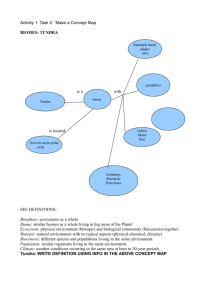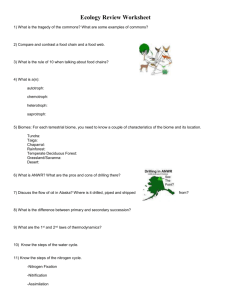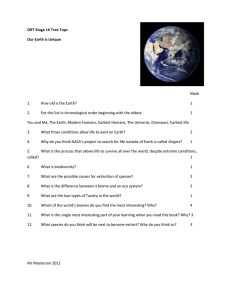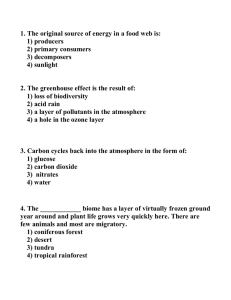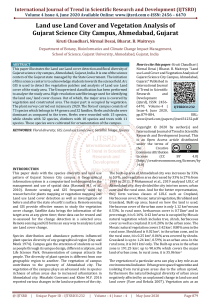BIOME SHIFTS IN SIBERIAN ARCTIC TUNDRA: EVIDENCE FROM FIVE
advertisement
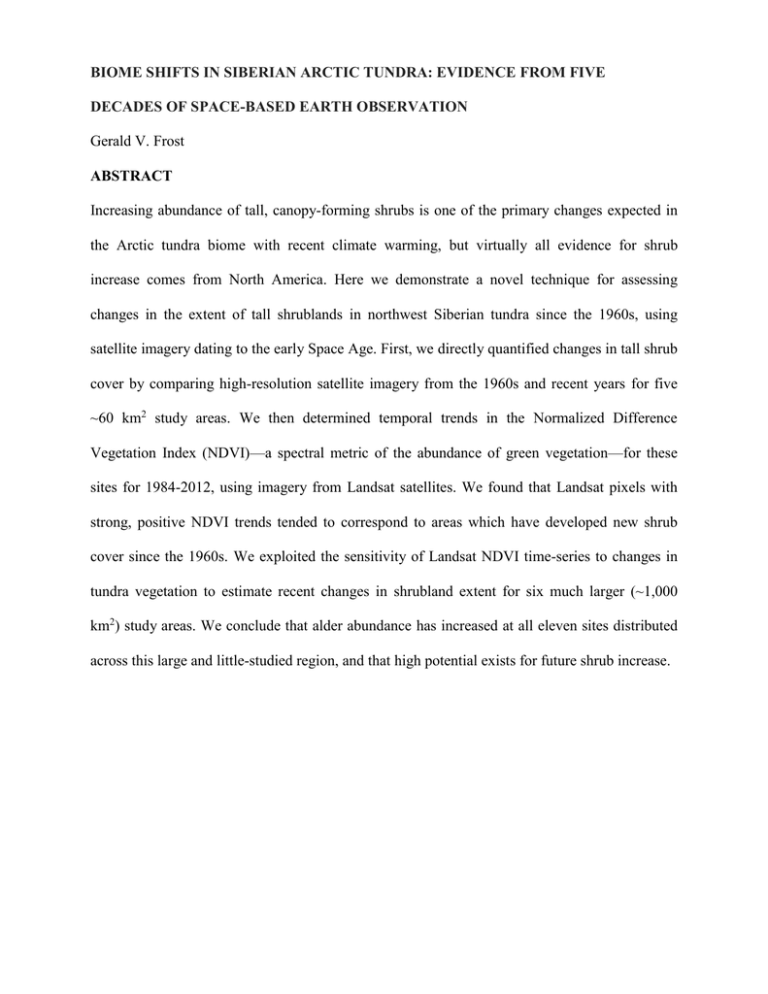
BIOME SHIFTS IN SIBERIAN ARCTIC TUNDRA: EVIDENCE FROM FIVE DECADES OF SPACE-BASED EARTH OBSERVATION Gerald V. Frost ABSTRACT Increasing abundance of tall, canopy-forming shrubs is one of the primary changes expected in the Arctic tundra biome with recent climate warming, but virtually all evidence for shrub increase comes from North America. Here we demonstrate a novel technique for assessing changes in the extent of tall shrublands in northwest Siberian tundra since the 1960s, using satellite imagery dating to the early Space Age. First, we directly quantified changes in tall shrub cover by comparing high-resolution satellite imagery from the 1960s and recent years for five ~60 km2 study areas. We then determined temporal trends in the Normalized Difference Vegetation Index (NDVI)—a spectral metric of the abundance of green vegetation—for these sites for 1984-2012, using imagery from Landsat satellites. We found that Landsat pixels with strong, positive NDVI trends tended to correspond to areas which have developed new shrub cover since the 1960s. We exploited the sensitivity of Landsat NDVI time-series to changes in tundra vegetation to estimate recent changes in shrubland extent for six much larger (~1,000 km2) study areas. We conclude that alder abundance has increased at all eleven sites distributed across this large and little-studied region, and that high potential exists for future shrub increase.
